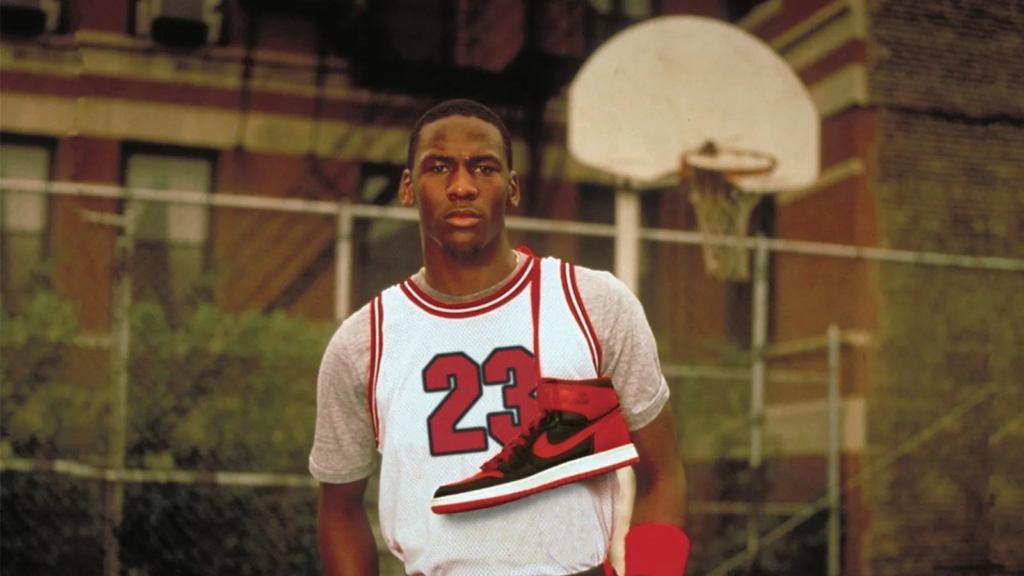
As iconic as the Air Jordan sneakers that garner awe, Michael Jordan stands as a legend within the realm of the Shoes Game culture.
A Sporting Genius in History
Michael Jordan emerged as a prodigy in basketball, baseball, and football during his high school years, with basketball being his utmost passion. With his talent, MJ etched remarkable stats throughout his career: averaging 17.7 points, shooting 54%, and grabbing 5.0 rebounds in 101 collegiate basketball games; boasting 30.1 points, 6.2 rebounds, and 5.3 assists per game over 1072 NBA matches; concluding his career with 32,292 points, ranking fifth on the all-time NBA scoring list.

Any discussion of Jordan’s talent would be incomplete without mentioning the iconic “Flu Game” of 1996-1997—a symbolic moment in his career. The “Flu Game” saw Jordan tally 38 points, 7 rebounds, and 5 assists, leading the Bulls to a spectacular victory over the Utah Jazz. Reports of Jordan playing despite illness heightened the game’s legendary status.
Jordan’s playing style continued to influence generations of athletes. His impact on the sport was described by Bleacher Report as making basketball “more entertaining,” shifting away from tight defenses to higher-scoring games. Thanks to Michael, the NBA became the most-watched sports league globally. His talent and influence were unparalleled during his time.
Why Did Nike Choose Jordan Over Anyone Else?
Ever wondered why Nike decided to partner with Michael Jordan over anyone else?
The story begins with a basketball player pioneering the use of his own brand to make money. In 1984, as Nike sought a breakthrough against the market dominance of Reebok, they took a major gamble on Michael Jordan, investing $500,000 annually and signing a five-year, $2.5 million contract with him. It was one of the biggest and riskiest sports contracts in history.

However, remember, this was before Jordan had played a single NBA game or had the legendary “Flu Game.” Was it Jordan’s high school prowess that attracted Nike?
At that time, Nike’s five-year deal with Michael Jordan came with conditions: the contract could be terminated if Jordan failed to meet three criteria within three years:
Win Rookie of the Year.
Become an All-Star.
Average at least 22 points per game over his first three seasons.
The legendary number 23 proved himself worthy of Nike’s bold move with his impressive stats mentioned earlier. Interestingly, his first choice was to sign with Adidas, but they rejected him, citing his “too short” height. At that time, joining Adidas or Converse would have earned MJ a dream $100,000.

In April 1985, a commercial featuring a basketball-playing young man soaring through the air with the affirming question “Who said man was not meant to fly?” became a legendary image in the sneaker world. Not the first basketball player, nor the first to have a namesake brand, nor particularly remarkable at that time, MJ later revolutionized the industry and proved his worth.
The first product of this partnership was the Air Jordan 1—a legend born from a legend. A high-top pair in red with unique color panels combined. The New York Times dubbed them “shoes from outer space in 1986.”
The Shoes Game Culture Originates from Jordan
A month and a half before the release of the Air Jordan 1 “BRED,” the NBA warned Nike that MJ would not be allowed to wear the shoes in games due to violating uniform regulations, which at that time required shoes to be at least 51% white. Nike seized this “opportunity” to advertise its banned unique sneakers.
Stories of the NBA fining MJ $5,000 every time he wore the Air Jordan 1 in games became legendary, and Nike happily paid the fines.
After joining Nike, MJ took the rejected Adidas contract as a personal challenge. And as we’ve seen, the rest is history: Nike took the top spot, Adidas took second, and even Converse ceased to be a major player in sports.
To become an icon in the Sneaker Culture, as mentioned numerous times above, one must acknowledge the influence of the Air Jordan 1. The Air Jordan 1 made the loudest noise with its “banned” NBA campaign. A banned shoe worn by a player—this was a game-changer. This was the impact that Michael Jordan brought.
Designed by Peter C. Moore, the Air Jordan had to meet two criteria set by the player: the shoes had to be lower and “more fun” than others. Jordan’s initial wearings of the shoes caught the attention of sneakerheads.
Look at what Michael Jordan achieved and why he became one of the most influential figures in the Shoes Game culture. From Jordan’s achievements and the eponymous shoe line, he inspired many basketball players and fans. They wanted to be like him, rushing to buy shoes similar to their idol’s. Moreover, the Air Jordan 1 was also highly regarded for its aesthetics at the time.
The first six-week sales of 1.5 million pairs of Air Jordan 1 shoes established a new empire in the sports shoe market. Nike exclaimed, “1986 is the best year in the company’s 22-year history.” Gradually, Nike built stories around Air Jordan to boost sales. And then, it became a culture, laying the foundation for today’s Shoes Game.
Nike• Read more
Adidas• Read more
123tv.cloud• Read more



